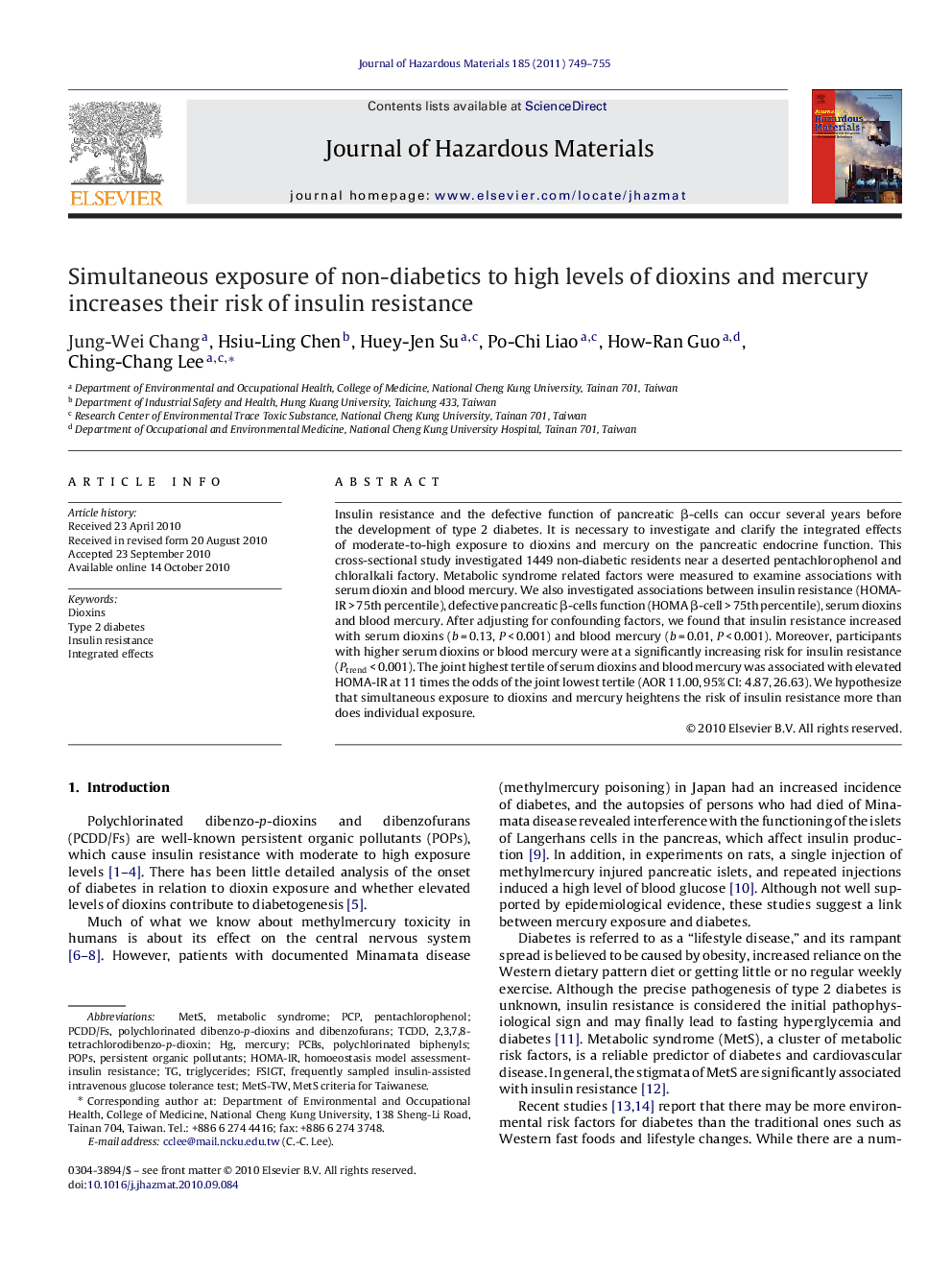| Article ID | Journal | Published Year | Pages | File Type |
|---|---|---|---|---|
| 579851 | Journal of Hazardous Materials | 2011 | 7 Pages |
Abstract
Insulin resistance and the defective function of pancreatic β-cells can occur several years before the development of type 2 diabetes. It is necessary to investigate and clarify the integrated effects of moderate-to-high exposure to dioxins and mercury on the pancreatic endocrine function. This cross-sectional study investigated 1449 non-diabetic residents near a deserted pentachlorophenol and chloralkali factory. Metabolic syndrome related factors were measured to examine associations with serum dioxin and blood mercury. We also investigated associations between insulin resistance (HOMA-IR > 75th percentile), defective pancreatic β-cells function (HOMA β-cell > 75th percentile), serum dioxins and blood mercury. After adjusting for confounding factors, we found that insulin resistance increased with serum dioxins (b = 0.13, P < 0.001) and blood mercury (b = 0.01, P < 0.001). Moreover, participants with higher serum dioxins or blood mercury were at a significantly increasing risk for insulin resistance (Ptrend < 0.001). The joint highest tertile of serum dioxins and blood mercury was associated with elevated HOMA-IR at 11 times the odds of the joint lowest tertile (AOR 11.00, 95% CI: 4.87, 26.63). We hypothesize that simultaneous exposure to dioxins and mercury heightens the risk of insulin resistance more than does individual exposure.
Keywords
Related Topics
Physical Sciences and Engineering
Chemical Engineering
Chemical Health and Safety
Authors
Jung-Wei Chang, Hsiu-Ling Chen, Huey-Jen Su, Po-Chi Liao, How-Ran Guo, Ching-Chang Lee,
